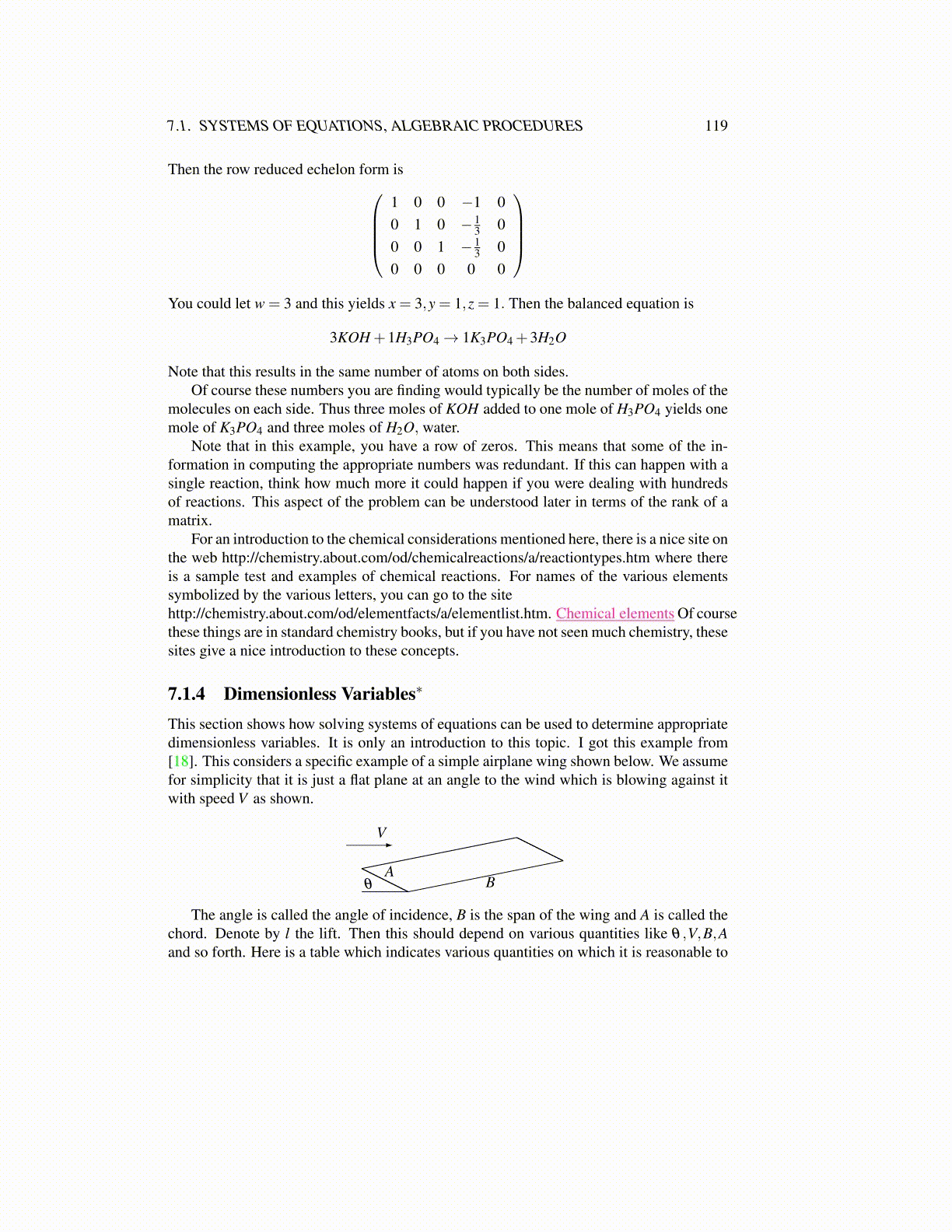
7.1. SYSTEMS OF EQUATIONS, ALGEBRAIC PROCEDURES 119
Then the row reduced echelon form is1 0 0 −1 00 1 0 − 1
3 00 0 1 − 1
3 00 0 0 0 0
You could let w = 3 and this yields x = 3,y = 1,z = 1. Then the balanced equation is
3KOH +1H3PO4→ 1K3PO4 +3H2O
Note that this results in the same number of atoms on both sides.Of course these numbers you are finding would typically be the number of moles of the
molecules on each side. Thus three moles of KOH added to one mole of H3PO4 yields onemole of K3PO4 and three moles of H2O, water.
Note that in this example, you have a row of zeros. This means that some of the in-formation in computing the appropriate numbers was redundant. If this can happen with asingle reaction, think how much more it could happen if you were dealing with hundredsof reactions. This aspect of the problem can be understood later in terms of the rank of amatrix.
For an introduction to the chemical considerations mentioned here, there is a nice site onthe web http://chemistry.about.com/od/chemicalreactions/a/reactiontypes.htm where thereis a sample test and examples of chemical reactions. For names of the various elementssymbolized by the various letters, you can go to the sitehttp://chemistry.about.com/od/elementfacts/a/elementlist.htm. Chemical elements Of coursethese things are in standard chemistry books, but if you have not seen much chemistry, thesesites give a nice introduction to these concepts.
7.1.4 Dimensionless Variables∗
This section shows how solving systems of equations can be used to determine appropriatedimensionless variables. It is only an introduction to this topic. I got this example from[18]. This considers a specific example of a simple airplane wing shown below. We assumefor simplicity that it is just a flat plane at an angle to the wind which is blowing against itwith speed V as shown.
θ
V
BA
The angle is called the angle of incidence, B is the span of the wing and A is called thechord. Denote by l the lift. Then this should depend on various quantities like θ ,V,B,Aand so forth. Here is a table which indicates various quantities on which it is reasonable to